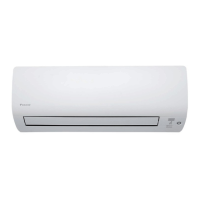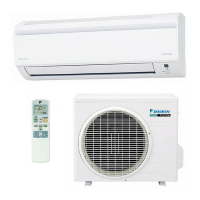System control Si18-201
130 Main Functions
3.14 Gas Shortage Malfunction
Outline A gas shortage malfunction is detected by using electric current and by judging the discharge
pipe temperature and motorized valve opening degree.
Details Gas shortage detection based on current
The current-based gas shortage detection is conducted when the operating frequency
exceeds 55 Hz. When the following condition is met, a gas shortage malfunction is
determined.
Input current
≤
(23/256) × Operating frequency +(-3.5) A
Gas shortage detection based on discharge pipe temperature and motorized valve
opening degree
This gas shortage detection method uses either the opening of the motorized valve of the BP
or outdoor unit.
1. Gas shortage detection based on BP motorized valve opening and discharge pipe
temperature
Gas shortage malfunction is determined when the following condition is met during
discharge pipe temperature control.
When discharge pipe temperature (DO) > 1 × target discharge pipe temperature (DOSET) +
20°C, motorized valve MAX flow rate signal from operating BP is continuously received for
80 seconds.
2. Gas shortage detection based on outdoor unit motorized valve opening and
discharge pipe temperature
Gas shortage malfunction is determined when the following condition is met during cooling
mode discharge pipe temperature control.
When discharge pipe temperature (DO) > 1 × target discharge pipe temperature (DOSET) +
20°C, condition (EVG
≥
450 pulses) remains for 80 seconds.
Shortage of refrigerant charge is judged when the following condition are satisfied during
discharge temperature control in heating operation.
At Discharge pipe temp. (DO) > Target discharge temperature +20ºC and when the
condition of
EVL > 450 pulse continue 80 seconds.

